Venice was a prosperous city-state in the Middle Ages, playing a significant role in the Crusades and having a strong naval presence. However, it faced challenges including the Black Death and conflicts with neighbouring powers in the 14th century. Despite these obstacles, Venice managed to retain its maritime power, although its economic importance was diminished by the discovery of new trade routes. In the 18th century, Venice suffered a decline and eventually fell under Austrian rule. It later became part of Italy and saw a resurgence in tourism in the 19th century, becoming famous for its architecture, canals, and cultural heritage. Read on to find out more about the history of Venice.
The History of Venice: Italy's Historic ‘Floating City’
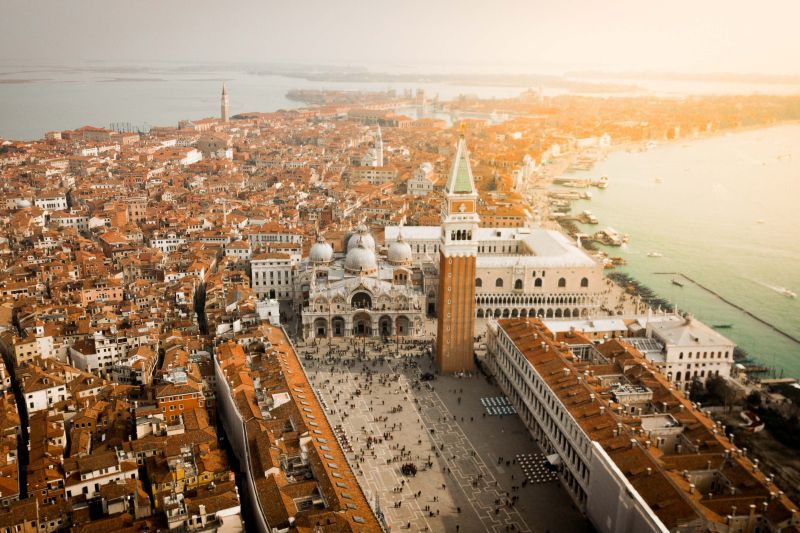
In the Beginning
Once the capital of a Republic that ruled the most powerful empire in the Mediterranean, Venice’s history was shaped by its unique location in the centre of a mass of islands in a coastal lagoon. The history of Venice dates back to the 6th century, and once wasn’t just a city in a larger state: Venice was one of the greatest trading powers in medieval and Renaissance Europe. At the end of the Silk Route from China, Venice was a cosmopolitan city that found its fortunes in luxurious trade and cargo from Europe, the Middle East and Asia.
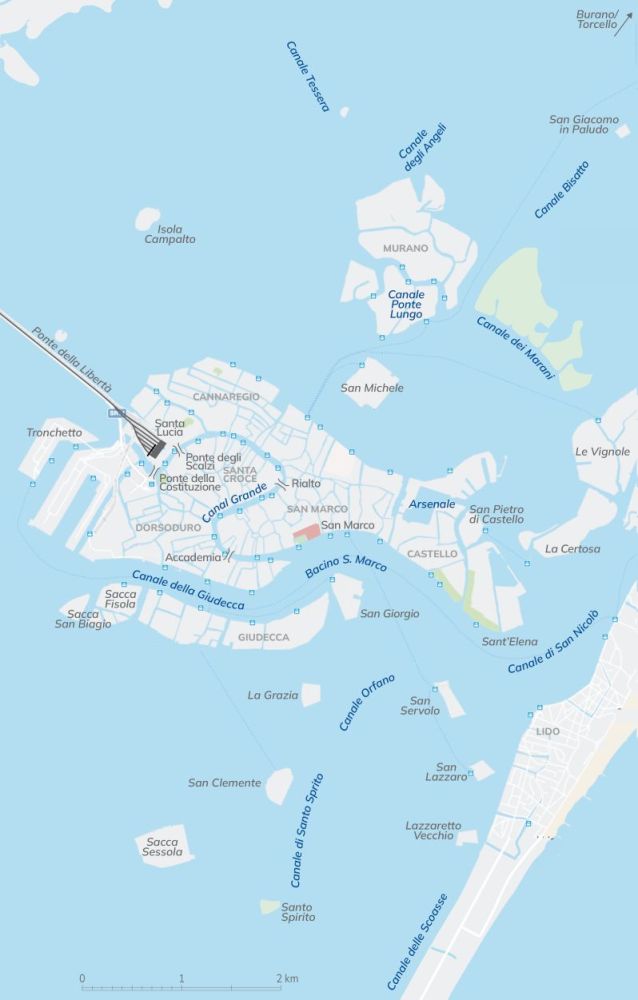
The Roman Era
At the height of the Roman Empire, Venice’s coastal lagoons were home only to small fishing communities, but then in the 5th century AD the western Roman Empire was overrun with barbarian tribes. As Italy became a battleground for Huns, Goths, Eastern Romans and the Lombards, the Veneti tribe, who were settled on the mainland areas of north-eastern Italy, sought refuge among the lagoons. Venice is said to have been founded in 421 AD by the Venti refugees fleeing Vandal invaders, and in the following years were joined by those escaping Lombard attackers.
Initially, the refugees settled on the islets, mudflats and sandbanks of the Venetian lagoon, at Torcello and at Malamocco on the Lido, of which there is evidence of a settlement in the 7th century. The settlement soon had an outside ruler, appointed by the resurgent Eastern Roman, or Byzantine, Empire, which had maintained a part of Italy from a base in Ravenna for nearly 200 years. After Ravenna fell to the Lombards in 751, wealthy merchant families who had emerged in the city selected Orso Ipato to be their doge (or duke); the first in an unbroken line of 117 doges that would rule Venice for a thousand years. By the early 9th century, the Venetians had established their capital on the safer central islands of the Rialto.
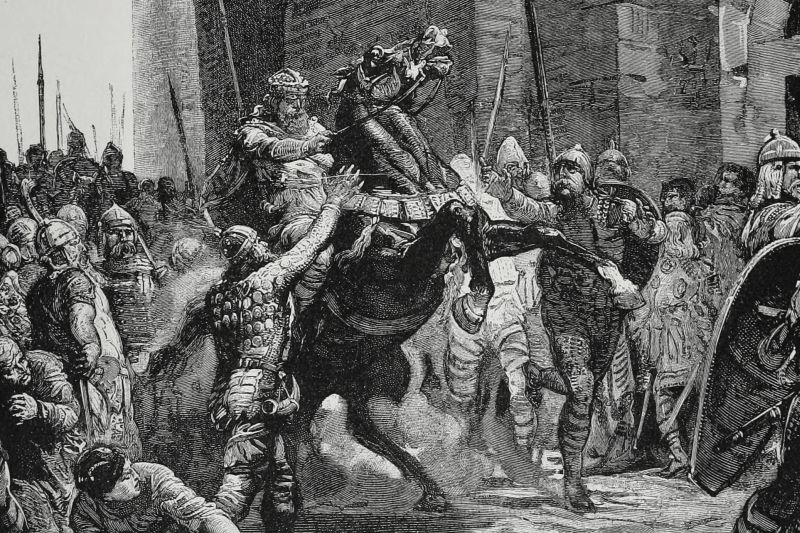
A Powerful Trading Nation
Venice developed as a trading centre, doing business with not only the Islamic world, but also with the Byzantine Empire, with whom it remained close. For an empire with little commercial nous, Venice benefitted from Byzantium’s cultural influence and from trading links with different parts of its vast empire. In the following centuries, Venice asserted its independence from the Byzantine Empire and due to its location flourished as a trading hub between Europe and the East. Venetian merchants sold Italian grain and wine to the great city of Constantinople, where in turn they bought spices and silver to sell to western Europe. Above all, Venice’s early success came from the trade of salt, the vital food preservative of the medieval world harvested from saltpans and lagoons. The Venetians went so far as to describe salt as “il vero fondamento del nostro stato” – the true foundation of our state.
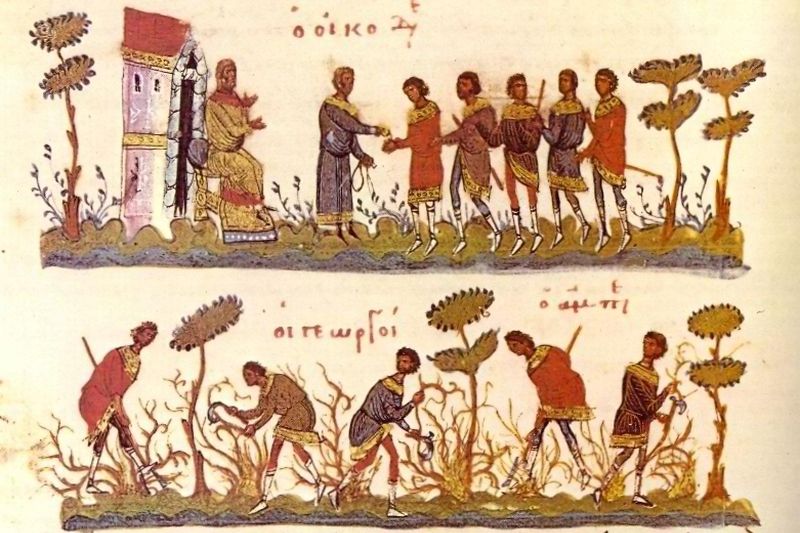
The Theft of Saint Mark
In 828, two Venetian merchants, visiting Alexandria, smuggled the supposed body of Saint Mark to boost the standing of their home city. Hidden in a case of pork, the saint’s relics went unnoticed by the Muslim customs officers and were subsequently interred in the city’s great new church, the Basilica di San Marco. This first Basilica was destroyed by fire in 976, but today’s cathedral, 66 consecrated in 1094, stands on the same site. Saint Mark became the city’s patron saint and his emblem, the winged lion, became the symbol of the Republic and decorated its standard.
Venetian trade routes to the East were plagued by pirates from the Balkan and North African coasts, and so Venice developed a navy to drive them from the seas and stationed strategic garrisons across the Adriatic shoreline. By the year 1000, the doges of Venice were also styling themselves as “Dukes of Dalmatia”.
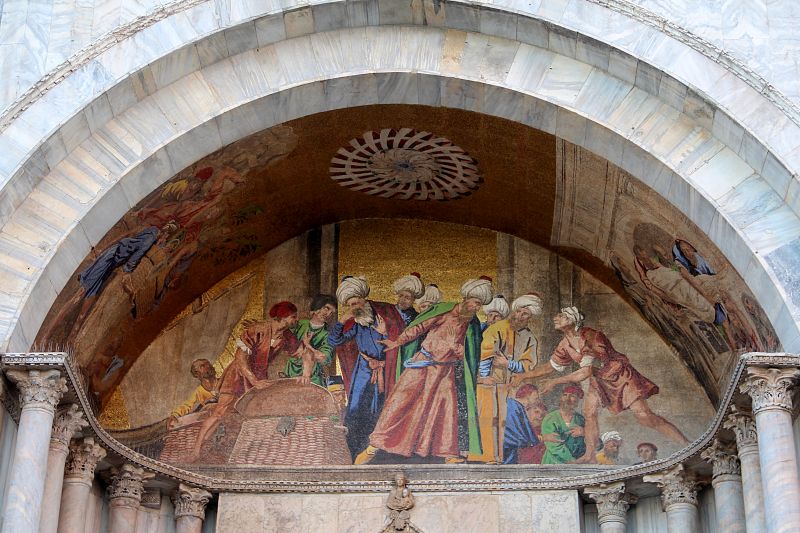
A Formidable Navy
The distinctive Venetian warship was the galley, powered by up to 150 oars and triangular lateen sails rigged fore and aft. Armed with a battering ram and about thirty crossbowmen, galleys were also used to transport high value items, such as silk, spices, or precious stones.
In 1103, construction began of Venice’s famous Arsenale, a giant state-owned shipyard that would become one of Europe’s largest industrial centres, employing over 200 workmen and turning out hundreds of ships a year. The Arsenale pioneered many modern industrial techniques, underpinning Venetian naval power for centuries, and by using its ground-breaking shipbuilding practices could average one new warship a day.
Armed with a powerful navy and lucrative trading concessions from the Byzantine Emperor Alexios I, including trading rights across the Empire and the right to harbour at Constantinople, Venice rose to be the greatest commercial and naval power in the Eastern Mediterranean. But Venetian power also came through shrewd negotiation and self-interest; this was the age of the Crusades, and Venice was closely involved with Crusader States as both allies and trading partners.
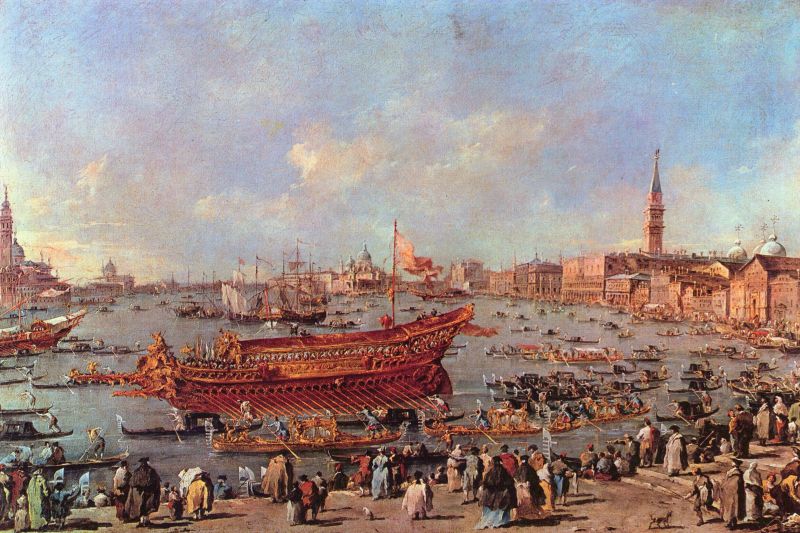
Impressive Negotiators
Venice’s history changed in 1202 when the Fourth Crusade arrived in Venice, seeking ships to take them to Egypt, however with no money to pay for them. Doge Enrico Dandolo sensed an opportunity: in exchange for loans, he first persuaded the crusaders to capture Zadar in Dalmatia for Venice, then relations having soured between Venice and the Byzantines, to attack Constantinople itself. In 1204, the world’s greatest Christian city was sacked and plundered by self-proclaimed warriors of Christ. Venice took its share of the loot, including, most famously, four bronze horses that once adorned the hippodrome of Constantine that found a new home on the façade of the Basilica of Saint Mark. The original sculptures were removed in 1973 following conservation concerns and were replaced by replicas. The originals are on display inside the basilica.
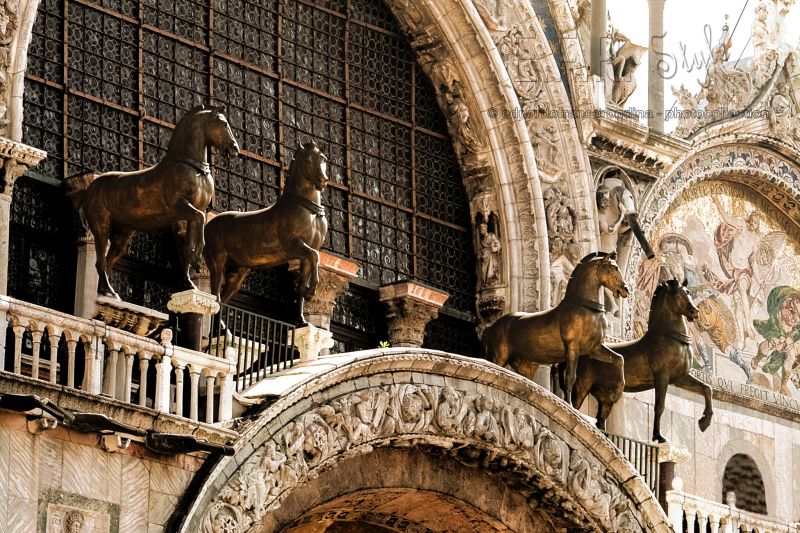
Reshaping Europe & Making Enemies
Doge Enrico and the Crusaders carved up the Byzantine Empire between them: Venice got the islands of the Aegean, Crete and the strategically placed ports of Modone and Corone, which became known as the Eyes of the Republic.
Empire brought Venice unprecedented wealth and power, but also fuelled a bitter rivalry with another maritime Italian Republic – the city of Genoa. For more than a century, these two Italian city-states eyed for supremacy in the Eastern Mediterranean, their wars ranging from the Levant, Sicily, the Aegean, Black Sea and the Adriatic.
During these wars, a Venetian captain named Marco Polo was taken prisoner, and used his time in a Genoese jail to dictate an account of his travels in China. The rivalry became a regional conflict with Genoa making alliances with the Hapsburg Duke of Austria, the King of Hungary and Padua; Venice with the revived Byzantine Empire, Cyprus and Milan.
The fortunes of war ebbed and flowed until 1379, when Venice came under attack from land and sea, the Genoese force occupying Chioggia, just 15 miles south of the city. But Venice miraculously turned the tables using galleys armed with gunpowder artillery for the first time, to trap and capture the Genoese fleet.
The wars finally ended in 1381 with the Treaty of Turin. Venice had to make significant concessions, including having to give Dalmatia to the King of Hungary and end its alliance with the Byzantine Emperor and King of Cyprus. But, while Genoa soon fell victim to internal feuding, Venice would stage an astonishing recovery, thanks in large part to the unique system of government by which the Republic was now ruled.
While Western Europe was dominated by kings who claimed to rule by divine right, several Italian city-states including Florence, Pisa and Venice, harked back to classical forms of government, chiefly the idea of the republic: Res Publica, the thing of the people.
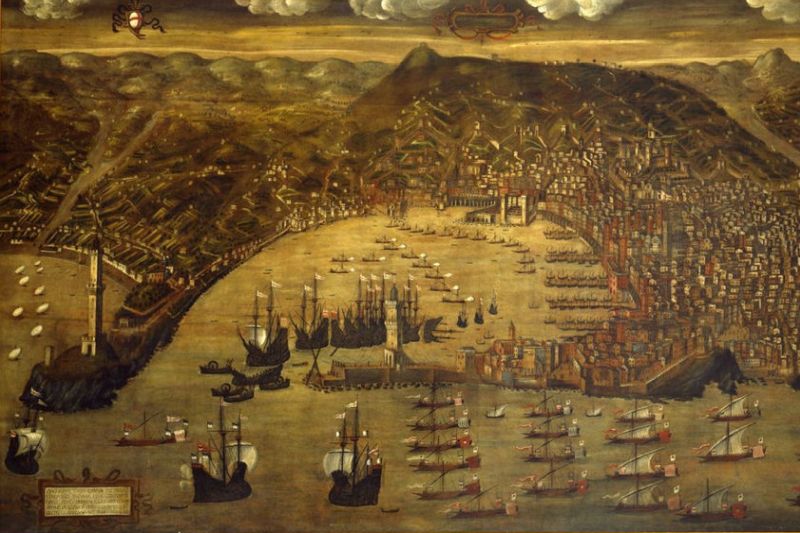
Doges Making Decisions
However, at the height of its power, Venice’s Republic, La Serenissima, as it was known, was firmly in the hands of its nobility. Only those whose names were listed in “the golden book”, the city’s registry of nobility, could join the Great Council, which appointed all senior officials through a complex system of voting and drawing lots.
They chose forty of their members to form the Quarantia, who supervised economic affairs, and two to three hundred to form the Senate, the main legislative body, attended in addition by the city’s commanders and diplomats. The elected head of government remained the doge, whose powers had been steadily diminished until by the 15th century he was seen as nothing more than a figurehead of the state, though he would continue to wield huge influence on Venice. The Republic’s day-to-day government was the Signoria, made up of the doge, six members of his minor council and three representatives of the Quarantia. They in turn could also be joined by the Savi, known colloquially as the Wise Men, to form the Full College. The Council of Ten, which had been established in 1310 meanwhile, had a special remit to sniff out subversion. It was a system that eventually acquired so many cheques and balances, that change, whether for bad or good, seemed unimaginable and undesirable.
The factionalism of medieval Italy had forced communes to appoint a Podesta, a nobleman from outside, to act as an impartial administrator. Yet, Venice did not need a Podesta because centuries earlier it had created a tradition for its head of state that guaranteed impartiality. The doges lived grandly, housed in splendour in the palace that people often chose as their favourite building in the world – the Palazzo Ducale. However, many were nothing more than figureheads that could do little without the consent of their councillors and law officers.
Moreover, the post required numerous sacrifices: its holders could not trade or accept gifts or own property outside the republic; nor could they abdicate or leave Venice is they wanted to; they were not even allowed to talk to foreign ambassadors on their own. As for their relations, Venice was so unlike the rest of Italy that a doge’s son, far from being able to succeed his father, was not allowed to vote or even marry a foreigner without permission from the Great Council.
The doges were nearly always old men when they took their position in the Republic: Antonio Grimani was eighty-seven years old when he was elected for office in 1521. The youngest member of the council, the ballot boy, would pick thirty names of the council from an urn. This number would then, slowly, be dwindled down to one final name, which would decide the elected doge. Even at the end of all of this, it was not so straightforward. The election of Marino, the great Grimani doge, required 71 ballots.
Over time, an idea developed across Europe that Venice’s constitution contained the three classical forms of government – democracy, oligarchy and monarchy – in perfect balance and so ensured social harmony and stability. The Myth of Venice, as this became known, overlooked the Republic’s healthy tradition of attempted coups, rampant corruption, and social tension. Despite this, the Venetians did achieve something unique in the Medieval and Renaissance world: a durable, stable and effective government.
After much discussion, in the 15th century Venetian expansion targeted the Italian mainland, with the capture of Vicenza, Verona, Padua and Udine. This period, 1420 – 50, was arguably the high point of Venetian wealth and power and the city’s population even sprang back after the Black Death, which often travelled along trade routes.
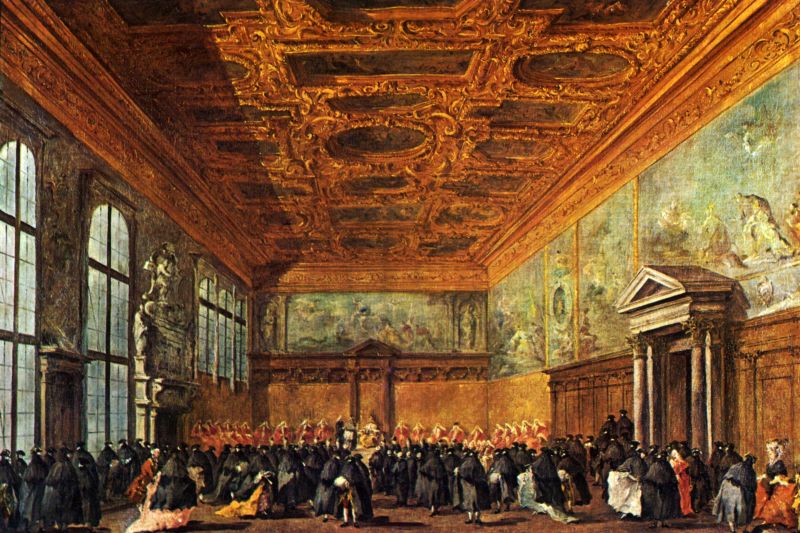
A Gradual Decline
Venice’s decline started in 1453, when Constantinople fell to the Ottoman Turks, whose expansion would threaten and later successfully seize many of Venice’s eastern lands. In addition, Portuguese sailors had rounded Africa, opening another trading route to the east. Expansion in Italy also backfired when the pope organised the League of Cambrai to challenge Venice, defeating the city. Although the territory was largely regained, the loss of reputation was immense. Victories such as the Battle of Lepanto over the Turks in 1571, did little to halt the decline.
For a while, Venice successfully shifted focus, manufacturing more and promoting itself as the ideal, harmonious republic – a true blend of nations. When Pope Paul V placed the city under a papal injunction in 1606 for, amongst other matters, trying priests in civil courts, Venice won a victory for secular power by forcing him to back down. However, throughout the 17th and 18th centuries, Venice declined further as maritime powers such as the British and Dutch secured Atlantic and African trade routes, thus rendering Venice’s seaborne empire inoperable.
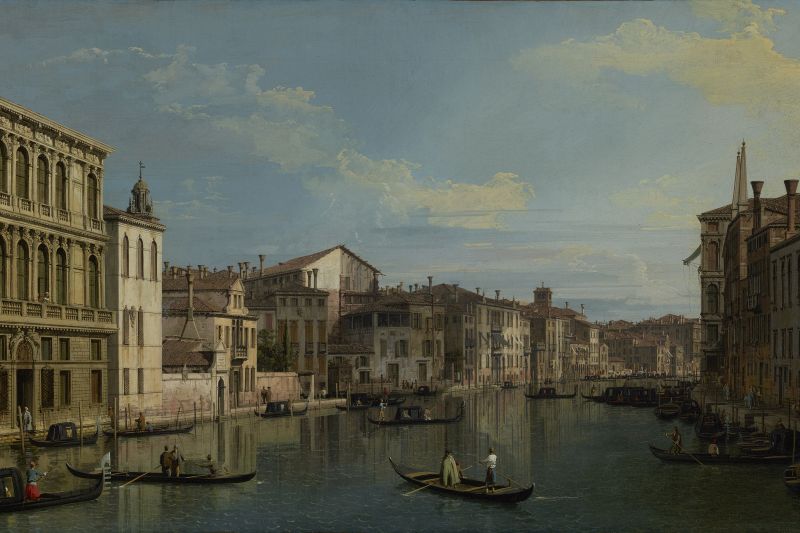
The End of a Republic
The Venetian Republic came to an end in 1797, when Napoleon’s French army forced the city to agree to a new pro-French “democratic” government, after which the city was looted of its great artworks. Venice was briefly Austrian after a peace treaty with Napoleon, but landed back into the hands of the French after the Battle of Austerlitz in 1805 and formed part of the short-lived Kingdom of Italy. The fall of Napoleon from power saw Venice placed under Austrian rule.
Venice did not prosper under Austrian rule and further decline set in. Venice was linked to the mainland for the first time by a railway constructed in 1846, and before too long tourists began to exceed the local population. In 1848 revolutions swept across Europe and Venice rose in rebellion against its Austrian occupiers. For a short period, Daniele Manin became the president of an independent Venice, however Austrian forces bombarded the city and Venice was forced to surrender in August 1849. However, the Austrians were defeated by the Prussians in 1866, and Venice was allowed to join the new nation of Italy, where it remains to this day.

Into the 20th Century
In the late 19th century Venice once again flourished as a port, and later as a manufacturing centre. In 1933, Mussolini built a road from the mainland to Venice and during the Second World War, although Venice was undamaged by fighting, its Jewish population was deported.
In 1966, Venice suffered a severe flood but the city soon recovered, leading to arguments over how to best treat Venice’s architecture and buildings. Conservation efforts which have been put in place retain much of the atmosphere that Venice is famous for, however flooding remains a problem. While tourism has been the mainstay of Venice since the mid-20th century, its population has sharply fallen and as of 2020, it is home to 55,000 people, compared to 120,000 in 1980.
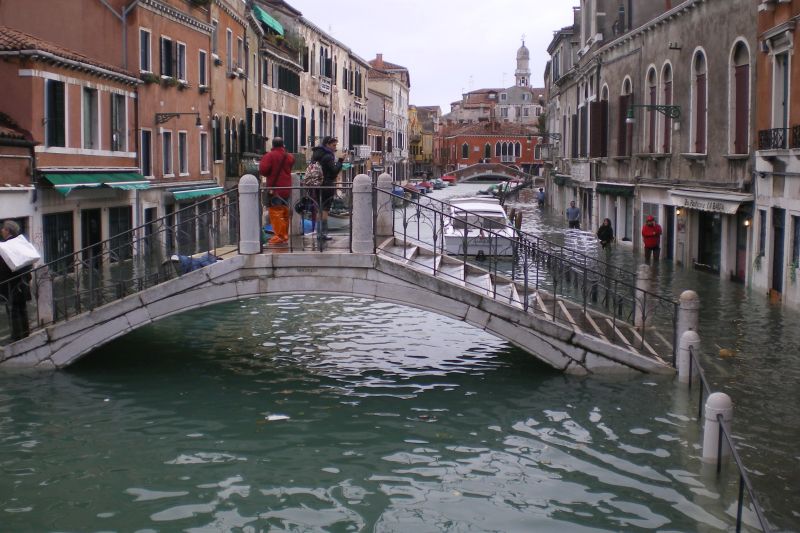
Ready to Immerse Yourself in the History of Venice?
Guests aboard luxury hotel barge La Bella Vita will have the opportunity to visit some of the landmarks listed above and learn about the history of Venice . For more information on our itineraries in Italy and the rest of our collection of luxury hotel barge cruises, why not order a free copy of our brochure today or speak to a member of our team directly using our handy Contact Form.

 English
English
 Spanish
Spanish French
French German
German Norwegian
Norwegian Portuguese
Portuguese Swedish
Swedish Italian
Italian Russian
Russian Simplified Chinese
Simplified Chinese Japanese
Japanese